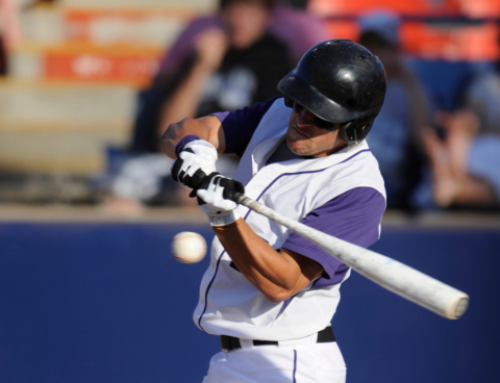3 Steps to Better In-Game Baseball Hitting
![]()
With young hitters, you don’t need a hitting philosophy as much as you need a few strong pieces of advice to get them on track. Here are my top three tips for baseball hitting, which can help your athletes bring it home.
1. Learn the Opposing Pitcher
Early in the game, batters have time to figure out what the opposing pitcher is going to throw in a particular situation. For instance, if he throws a change-up on a 2-1 pitch that is a called strike against your teammate, when that pitcher gets into a situation where he is behind in the count and the game is on the line—here comes a change-up.
Talk with your players about what they observe and what they can interpret from it. When each hitter can evaluate his teammates’ at-bats and learn how the pitcher is pitching, he will have the necessary information for steps two and three.
2. Guess Which Pitch Is Coming
The second step for in-game baseball hitting is to guess which pitch is coming.
Many baseball hitting coaches argue that hitters should not guess pitches, but should just sit on the fastball and adjust to off-speed. At certain levels that may be acceptable, although we want to teach our hitters to think like Ted Williams, who stated in his book The Science of Hitting: learn how to think like a pitcher and guess the pitch.
Hitting coaches can use any term they think is necessary for step 2. For our guys, it’s an educated guess.
3. Hit the Ball Hard
All hitting coaches want their players to hit the ball hard. This is an attainable goal that we teach our hitters to focus on. Telling them to hit for a certain batting average doesn’t translate well when they’re at the plate. Overthinking it can lead to not enough force.
Babe Ruth once famously said, “All I can tell them is pick a good one and sock it. I get back to the dugout and they ask me what it was I hit, and I tell them I don’t know except it looked good.”
RELATED: Struggling at the Plate? Try These Easy Hitting Drills
[cf]skyword_tracking_tag[/cf]RECOMMENDED FOR YOU
MOST POPULAR
3 Steps to Better In-Game Baseball Hitting
![]()
With young hitters, you don’t need a hitting philosophy as much as you need a few strong pieces of advice to get them on track. Here are my top three tips for baseball hitting, which can help your athletes bring it home.
1. Learn the Opposing Pitcher
Early in the game, batters have time to figure out what the opposing pitcher is going to throw in a particular situation. For instance, if he throws a change-up on a 2-1 pitch that is a called strike against your teammate, when that pitcher gets into a situation where he is behind in the count and the game is on the line—here comes a change-up.
Talk with your players about what they observe and what they can interpret from it. When each hitter can evaluate his teammates’ at-bats and learn how the pitcher is pitching, he will have the necessary information for steps two and three.
2. Guess Which Pitch Is Coming
The second step for in-game baseball hitting is to guess which pitch is coming.
Many baseball hitting coaches argue that hitters should not guess pitches, but should just sit on the fastball and adjust to off-speed. At certain levels that may be acceptable, although we want to teach our hitters to think like Ted Williams, who stated in his book The Science of Hitting: learn how to think like a pitcher and guess the pitch.
Hitting coaches can use any term they think is necessary for step 2. For our guys, it’s an educated guess.
3. Hit the Ball Hard
All hitting coaches want their players to hit the ball hard. This is an attainable goal that we teach our hitters to focus on. Telling them to hit for a certain batting average doesn’t translate well when they’re at the plate. Overthinking it can lead to not enough force.
Babe Ruth once famously said, “All I can tell them is pick a good one and sock it. I get back to the dugout and they ask me what it was I hit, and I tell them I don’t know except it looked good.”
RELATED: Struggling at the Plate? Try These Easy Hitting Drills
[cf]skyword_tracking_tag[/cf]









